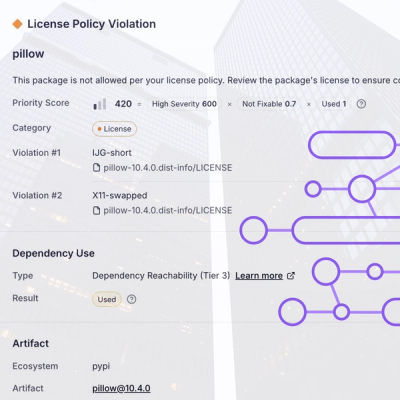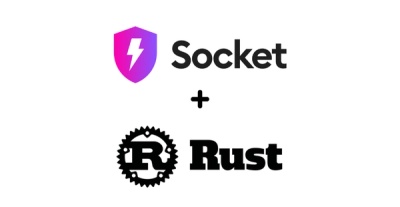
Research
/Security News
Critical Vulnerability in NestJS Devtools: Localhost RCE via Sandbox Escape
A flawed sandbox in @nestjs/devtools-integration lets attackers run code on your machine via CSRF, leading to full Remote Code Execution (RCE).
You can expose several HTTP or WebSocket applications over a single TCP port using ARR.JS. This is useful for better utilization of servers, including shared hosting.
Host HTTP request header.Instructions below are for setting up a single machine deployment (e.g. development environment) on a MacOS. Other OSes are conceptually similar.
Start unsecure MongoDB server on localhost:
mongod
Import application metadata for the three sample applications:
mongoimport -d arr -c apps src/apps.json
Configure your HOSTS file (/etc/hosts on MacOS and *nix, %systemroot%\system32\drivers\etc\hosts on Windows) to resolve domain names used by the sample applications to localhost by adding the following lines:
127.0.0.1 app1.janczuk.org
127.0.0.1 app1.tangyorange.com
127.0.0.1 app2.janczuk.org
127.0.0.1 app2.tangyorange.com
127.0.0.1 ws1.janczuk.org
127.0.0.1 ws1.tangyorange.com
Start the ARR.JS router to listen for unsecured traffic on port 80 and SSL traffic on port 443 (these ports cannot be used by other processes on the box):
cd src
sudo node arr.js --mongo=mongodb://localhost/arr -p 80 -s 443
Issue a few requests to test the system:
curl http://app1.tangyorange.com
curl https://app1.janczuk.org -k
curl http://app2.janczuk.org
curl https://app2.janczuk.org -k
In your favorite modern browser navigate to http://ws1.janczuk.org. You should see Dante's Divine Comedy
streamed down to the browser over a WebSocket connection, a stanza every 2 seconds. When connecting
over https://ws1.janczuk.org you will first see a security warning because the certificate exposed by
the application is not trusted (it is self-signed).
The MongoDB dabatase holds application metadata and must be accessible from all servers in the farm. You can use your own instance or get started with a free instance provided by MongoHQ. Bottom line is you need a MongoDB connection URL to provide to all instances of arr.js you will run on the backends.
The application metadata must be stored in a single MongoDB collection called apps. Each document in this collection
must have the following structure:
{
process: {
executable: "node", // specify the executable name here, including path if needed
args: [ // specify whatever command line arguments must be passed to the executable
"apps/app1/server.js"
]
},
hosts: [
{
host: "app1.janczuk.org",
ssl: "allowed", // you must say "allowed", "required", or "none" (for unsecure access only)
cert: "certs/app1-janczuk-cert.pem", // optional file with X.509 certificate associated with this host name
key: "certs/app1-key.pem" // optional file with the private key for the X.509 certificate
},
// ... you can specify multiple host names that can be used to access this application
],
instances: 2, // maximum number of instances of this application to create
machines: [ // this is the array of machines the application is currently running on
] // and it must be set to empty initially; it is managed by arr.js
}
For an example of application metadata, check out apps.json, a file that can be imported into the MongoDB database using the mongoimport tool.
Each server in the farm dedicated to running applications must be running an instance of arr.js. Typically each of the instances of arr.js would be configured identically, which allows any run of the mill TCP level load balancer to be put in front of the server farm. Arr.js accepts the following parameters:
Usage: node ./arr.js
Options:
-m, --mongo Mongo DB connecton string [default: "mongodb://localhost/arr"]
-r, --range Managed TCP port range [default: "8000-9000"]
-p, --port Unsecured listen port [default: 31415]
-s, --sslport SSL listen port [default: 31416]
-c, --cert Non-SNI (wildcard) server certificate for SSL [default: "certs/wildcard-janczuk-cert.pem"]
-k, --key Private key for SSL [default: "certs/wildcard-janczuk-key.pem"]
The MongoDB connection URL (-m) must point to the central MongoDB
database with the apps collection that holds the application metadata.
The managed TCP port range (-r) indicates the range of TCP ports arr.js will use to assign a TCP port to a
managed application when it is activated. The TCP port number assigned to an instance of an application is passed to the
application through
the process environment variable named PORT. In case of node.js applications for example, this value is accessible
via the process.env.PORT property and can be used to set up an HTTP listener.
See server.js for an example.
The unsecured (-p) and secured (-s) port number are the two TCP port numbers arr.js will listen on. Arr.js will
accept HTTP and WS traffic on the unsecured port, and HTTPS and WSS traffic on the secured port. SSL security terminates
at arr.js. Arr.js acts as an HTTP[S]/WS[S] reverse proxy, routing incoming requests to appropriate applications
based on the value of the Host HTTP request header. If necessary, an instance of an application is activated.
Communication between arr.js and an instance of an application is not secured with SSL
(i.e. plaintext HTTP or WS is used), so the application code should always set up their listeners for HTTP and WS,
regardless whether calls the client issues requests over SSL or not. Appropriate set of x-forwarded-* HTTP request
headers that arr.js adds to the routed requests allow applications to learn more about the original client connection.
Each instance of arr.js is configured with an X.509 certificate (-c) and the associated private key (-k). This certificate and private key are used to identify the server during the SSL handshake, unless application specific configuration specifies its own certificate and private key to be used with Server Name Identification (SNI). Note that for SNI to take effect the client must support it (which most modern browsers do). If you plan to support SSL for multiple applications with different host names and use a single server side certificate to secure them, the domain suffix of the host name of these applications must be the same (e.g. foo.barbaz.com and baz.barbaz.com), and the arr.js certificate must be a wildcard certificate (e.g. CN=*.barbaz.com).
In a typical deployment servers in a farm would run behind a TCP level load balancer. For the convenience of development, this project includes a very simple, TCP level software load balancer, nlb.js.
Configuration of nlb.js is stored in the adjacent nlb.json file with the following structure:
[
{ // multiple "routing rules" are allowed; typically one for unsecure traffic and one for SSL
"port": 80, // the input TCP port number the load balancer will listen on
"backends": [ // array of arr.js backend endpoints to load balance incoming TCP connections to
{
"host": "localhost", // destination host name
"port": 31415 // destination port number (does not need to match the input port number)
}
]
},
{
"port": 443,
"backends": [
{
"host": "localhost",
"port": 31416
}
]
}
]
The nlb.js is stared as a simple node application:
cd src
sudo node nlb.js
The nlb.js will perform TCP level, round robin load balancing of incoming TCP connections across the specified backends.
FAQs
HTTP and WebSocket application request routing
The npm package arrjs receives a total of 0 weekly downloads. As such, arrjs popularity was classified as not popular.
We found that arrjs demonstrated a not healthy version release cadence and project activity because the last version was released a year ago. It has 1 open source maintainer collaborating on the project.
Did you know?

Socket for GitHub automatically highlights issues in each pull request and monitors the health of all your open source dependencies. Discover the contents of your packages and block harmful activity before you install or update your dependencies.

Research
/Security News
A flawed sandbox in @nestjs/devtools-integration lets attackers run code on your machine via CSRF, leading to full Remote Code Execution (RCE).

Product
Customize license detection with Socket’s new license overlays: gain control, reduce noise, and handle edge cases with precision.

Product
Socket now supports Rust and Cargo, offering package search for all users and experimental SBOM generation for enterprise projects.